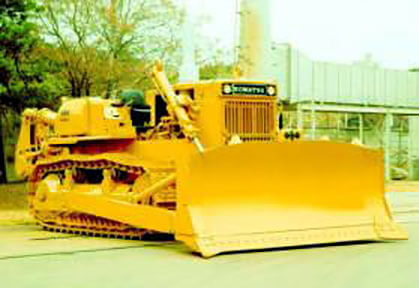1970
Since this era, the focus of domestic demand gradually started shifting from bulldozers to hydraulic shovels. Additional considerations, such as ease of operation, also became an important aspect of design.

After Nixon Shock and the Smithsonian Agreement in 1971, more competitive pricing was demanded to compete with imported construction equipment. As far as exporting went, the demand for large construction machinery was rising, forcing it to be more competitive in the global market.
A model change was made to improve quality and reliability.
Weight: 26430kg
Bulldozer
Since its first emergence in 1951, it took only 50 years for the hydraulic shovel to establish its primary position on construction sites worldwide. Its size ranges from mini to super size depending on the scale of construction, and during the half century, it kept evolving by achieving a minimum rear-swing radius and adapting styles that would work with characteristics of each site. Mirroring the movement of a human hand, a hydraulic shovel will continue to evolve during the 21st century.